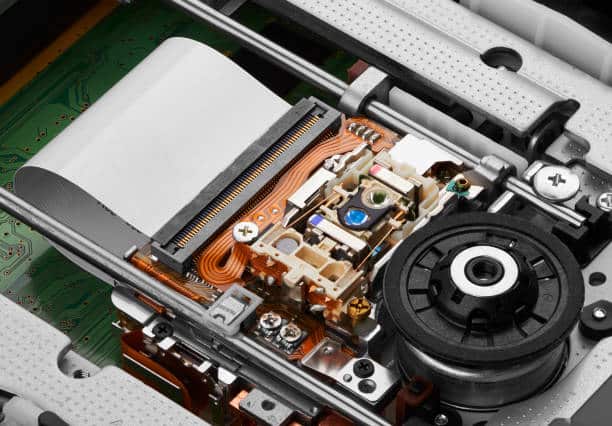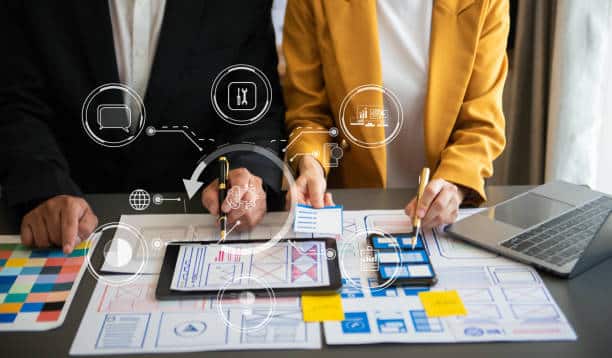Virtual Reality in Architecture Computer generated Reality (VR) has arisen as a groundbreaking innovation in different enterprises, and engineering is no exemption. By giving vivid encounters, VR is altering the way in which draftsmen plan structures and how clients imagine and encounter their future spaces. This article dives into the diverse uses of VR in engineering, featuring its advantages, challenges, and the future capability of this state of the art innovation.
1. Prologue to Computer generated Reality in Engineering

Computer generated Reality (VR) alludes to a recreated experience that can be like or totally not quite the same as this present reality. In engineering, VR empowers originators and clients to step into a computerized form of a structure before it is built. This innovation use superior quality 3D models, intuitive conditions, and ongoing input to make a vivid encounter that improves the plan and dynamic interaction.
The reception of VR in engineering is driven by the requirement for more powerful correspondence among modelers and clients. Customary 2D drawings and, surprisingly, 3D models on screens can unfortunately convey a limited amount a lot. VR, then again, permits clients to encounter a space at full scale, making it more clear spatial connections, lighting, and material decisions.
Read More:The benefits of automation: Streamlining business processes
2. Development of VR in Compositional Plan
The utilization of VR in engineering has developed fundamentally throughout recent many years. At first, draftsmen depended on actual models and outlines to convey their plans. The coming of PC helped plan (computer aided design) programming in the late twentieth century denoted a critical jump, considering more itemized and exact computerized models.
Nonetheless, it was only after the improvement of cutting edge VR equipment and programming that planners could make really vivid encounters. Early VR frameworks were massive and costly, restricting their openness. Late headways have made VR more reasonable and easy to use, prompting its far reaching reception in the structural field.
Present day VR stages offer high-goal shows, instinctive controls, and vigorous programming mix, empowering designers to establish intricate and intuitive conditions. These mechanical progressions have made ready for creative uses of VR in building plan and client introductions.
3. Upgrading Plan Accuracy and Imagination
One of the essential advantages of VR in engineering is its capacity to upgrade plan accuracy and imagination. With VR, draftsmen can investigate plan ideas in a more natural and intuitive way. They can stroll through their plans, inspect subtleties very close, and make continuous changes in view of their perceptions.
VR likewise considers a more significant level of imagination. Fashioners can try different things with various materials, lighting conditions, and spatial designs without the limitations of actual models. This opportunity encourages development and can prompt more exceptional and productive structural arrangements.
Moreover, VR empowers modelers to recognize and determine potential plan gives right off the bat all the while. By submerging themselves in a virtual model, they can recognize issues that probably won’t be clear in 2D plans or static 3D models, for example, sightline impediments or lacking space usage.
4. Changing Client Introductions and Input
Client introductions are a basic part of the building system, and VR has changed how these introductions are led. Conventional techniques frequently depend on portrayals, renderings, and actual models, which can be hard for clients to understand completely. VR, be that as it may, permits clients to encounter a plan as though they were strolling through the genuine space.
This vivid experience makes it simpler for clients to figure out the planner’s vision and give informed input. Clients can investigate the virtual climate, notice the progression of spaces, and even associate with components inside the plan. This degree of commitment prompts more useful conversations and guarantees that client inclinations are precisely reflected in the last plan.
Also, VR can be utilized to grandstand different plan choices, permitting clients to analyze options one next to the other. This capacity upgrades the dynamic cycle and assists clients with feeling more sure about their decisions.
Read More: E-Commerce Solutions: Moving Your Business Online
5. Working with Distant Coordinated effort and Correspondence

In an undeniably globalized world, structural activities frequently include groups and clients situated in various areas of the planet. VR works with far off coordinated effort and correspondence, making it simpler for partners to cooperate no matter what their actual area.
With VR, colleagues can meet in a virtual space to survey plans, examine changes, and settle on choices progressively. This virtual coordinated effort diminishes the requirement for make a trip and can prompt quicker project courses of events. It likewise guarantees that all partners have an unmistakable and steady comprehension of the plan, decreasing the probability of misconceptions and blunders.
Moreover, VR can be incorporated with other advanced devices, for example, Building Data Demonstrating (BIM) programming, upgrading the coordination of complicated projects. By consolidating VR with BIM, planners can make definite and exact models that mirror each part of a structure’s plan and development.
6. Further developing Development Arranging and Execution
Past the plan stage, VR likewise assumes a critical part in development arranging and execution. Virtual models can be utilized to picture development arrangements, distinguish likely issues, and plan operations all the more really. This proactive methodology can assist with forestalling deferrals and cost invades.
VR can likewise be utilized for site examination and arrangement. By overlaying virtual models onto certifiable locales, engineers and project workers can more readily comprehend how a structure will fit inside its current circumstance. This capacity is especially valuable for complex tasks with testing site conditions.
Moreover, VR can improve security preparing for development laborers. Computer experiences of building destinations can be utilized to prepare laborers on security conventions and methodology in a controlled and sans risk climate. This preparing can prompt a more secure worksite and decrease the probability of mishaps.
Read More: The Role of Big Data in Enhancing Agricultural Efficiency
7. Empowering Practical and Energy-Proficient Plan
Manageability is a critical thought in current engineering, and VR can uphold the improvement of more reasonable and energy-effective plans. VR reproductions can demonstrate ecological factors like daylight, wind, and temperature, permitting designers to upgrade building execution.
By trying different things with various plan systems in a virtual climate, draftsmen can recognize arrangements that limit energy utilization and natural effect. For instance, they can test the viability of different concealing gadgets, protection materials, and ventilation frameworks.
VR can likewise work with the joining of environmentally friendly power innovations into building plans. Modelers can recreate the arrangement and execution of sunlight based chargers, wind turbines, and other environmentally friendly power frameworks to decide the best designs.
8. Upgrading Showcasing and Deals Endeavors
VR isn’t just a useful asset for plan and development yet additionally for promoting and deals. Land engineers and specialists can involve VR to grandstand properties to possible purchasers in a connecting with and intuitive way. Planned purchasers can take virtual voyages through properties, acquiring a practical feeling of the space without visiting face to face.
This capacity is especially significant for pre-development deals. Designers can showcase properties before they are fabricated, furnishing purchasers with a substantial vision of what their future home or office will seem to be. This approach can speed up deals and diminish advertising costs.
Also, VR can be utilized to make convincing special materials. Great VR renderings and activitys can be integrated into sites, online entertainment crusades, and other promoting channels to draw in and connect with likely clients.
9. Tending to Difficulties and Limits
While VR offers various advantages for engineering, it isn’t without its difficulties and restrictions. One of the essential difficulties is the expense of VR gear and programming. Despite the fact that costs have diminished lately, top notch VR frameworks can in any case address a huge speculation, especially for more modest firms.
One more test is the expectation to learn and adapt related with VR innovation. Modelers and creators need to secure new abilities to actually utilize VR instruments, which can call for investment and preparing. Moreover, making itemized and exact VR models can be tedious and asset serious.
There are additionally specialized impediments to consider. VR encounters can in some cases cause movement affliction or distress, which might restrict their ease of use for certain clients. Guaranteeing a consistent and agreeable VR experience requires cautious thoughtfulness regarding equipment particulars and programming enhancement.
10. Future Possibilities and Advancements

The fate of VR in engineering is brilliant, with progressing headways promising to additional improve its abilities. As VR innovation keeps on developing, we can anticipate significantly more reasonable and vivid encounters. Upgrades in show goal, field of view, and haptic criticism will cause virtual conditions to feel progressively similar.
Reconciliation with other arising advancements like increased reality (AR) and man-made brainpower (simulated intelligence) will likewise extend the conceivable outcomes of VR in design. AR can overlay virtual components onto this present reality, giving extra setting and data during site visits or development. Artificial intelligence can help with producing plan choices, streamlining building execution, and computerizing routine errands.
Also, the advancement of cloud-based VR stages will work with more consistent coordinated effort and information sharing. Engineers, clients, and workers for hire will actually want to get to and cooperate with virtual models from anyplace, improving the productivity and adaptability of the plan cycle.
Read More: The Future of Work: How IT is Revolutionizing the Modern Workplace
The End
Augmented Reality is upsetting the field of engineering, offering phenomenal chances to improve plan accuracy, client experience, and task coordinated effort. By drenching clients in a computerized portrayal of their future spaces, VR overcomes any barrier among creative mind and reality.
As innovation keeps on propelling, the job of VR in engineering will just develop, driving advancement and changing how we configuration, construct, and experience our fabricated climate. The reception of VR in engineering improves the plan cycle as well as guarantees that the ultimate results are more lined up with the client’s vision and necessities, eventually prompting better, more supportable, and more imaginative building arrangements.

